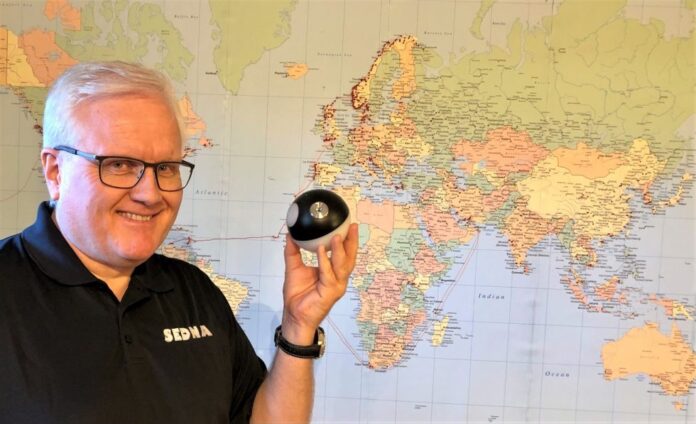The multi-year distribution agreement with Sensor Globe, announced by OTAQ, will aim to bring the monitoring system to fisheries markets in Scotland and Chile, which produce large quantities of farmed salmon.
The Sensor Globe adds a complementary product to our aquaculture portfolio which builds on the range of solutions already available to our clients. Having secured our first customer for the Sensor Globe in Chile, we are now looking forward to representing the Sensor Globe in our core markets and progressing the market opportunity.
“We see huge potential in the suite of complementary aquaculture solutions given the positive impacts they can have on fish stock welfare and production volumes,” Phil Newby, Chief Executive at OTAQ, said.
Within net pen salmon farms, the globe has the ability to track oxygen levels, water temperature and pH in real time.
“We are excited to be working with the team at OTAQ. Partnered alongside their technology in Chile and the United Kingdom will allow for us to further enhance fish welfare during all stages of fish production,” Sheamus MacDonald, Chief Executive and co-founder of Sensor Globe, stated.
The wireless Sensor Globe is a multi-functional sensor concept the size of a small grapefruit. Customers can build their own units with various micro-sensors and monitor real time data through an app on their smartphone, tablet or via the internet. Or simply leave the Sensor Globe anywhere to log data for months at a time, then retrieve it and upload data for analysis through the Sedna Cloud.
The Sensor Globe was originally designed to monitor water quality and animal welfare in Canada. The Sensor Globe has adjustable internal ballast so that it can either float like a small iceberg, sink or have neutral buoyancy. It measures only 95mm diameter, weighs 325 grams and is designed to “flow-with-the-fish” through pipes, hoses, fish pumps, lice treatment and other machinery. Measuring both water quality parameters, but also any physical impact on the fish, such as acceleration and shock.

